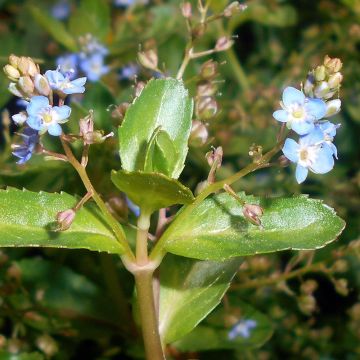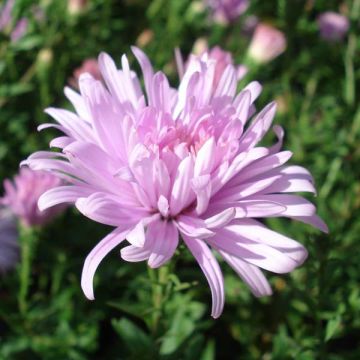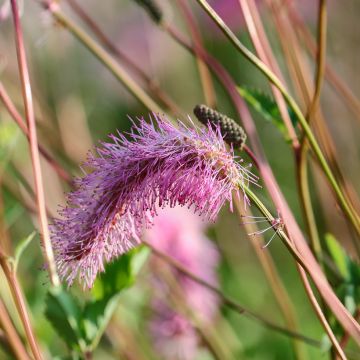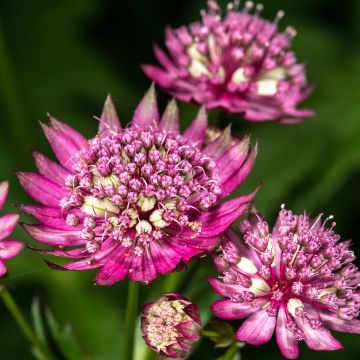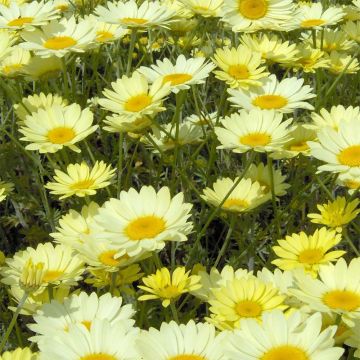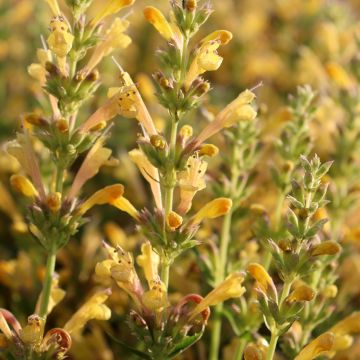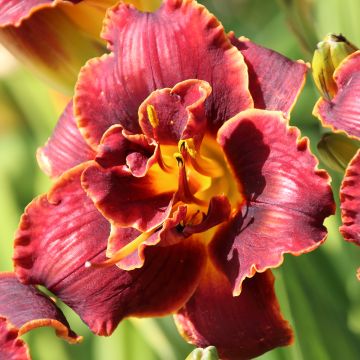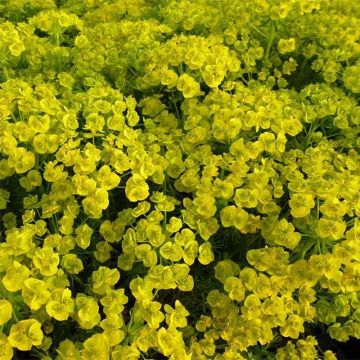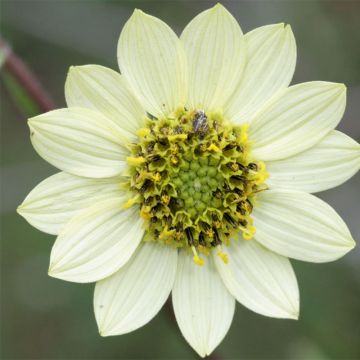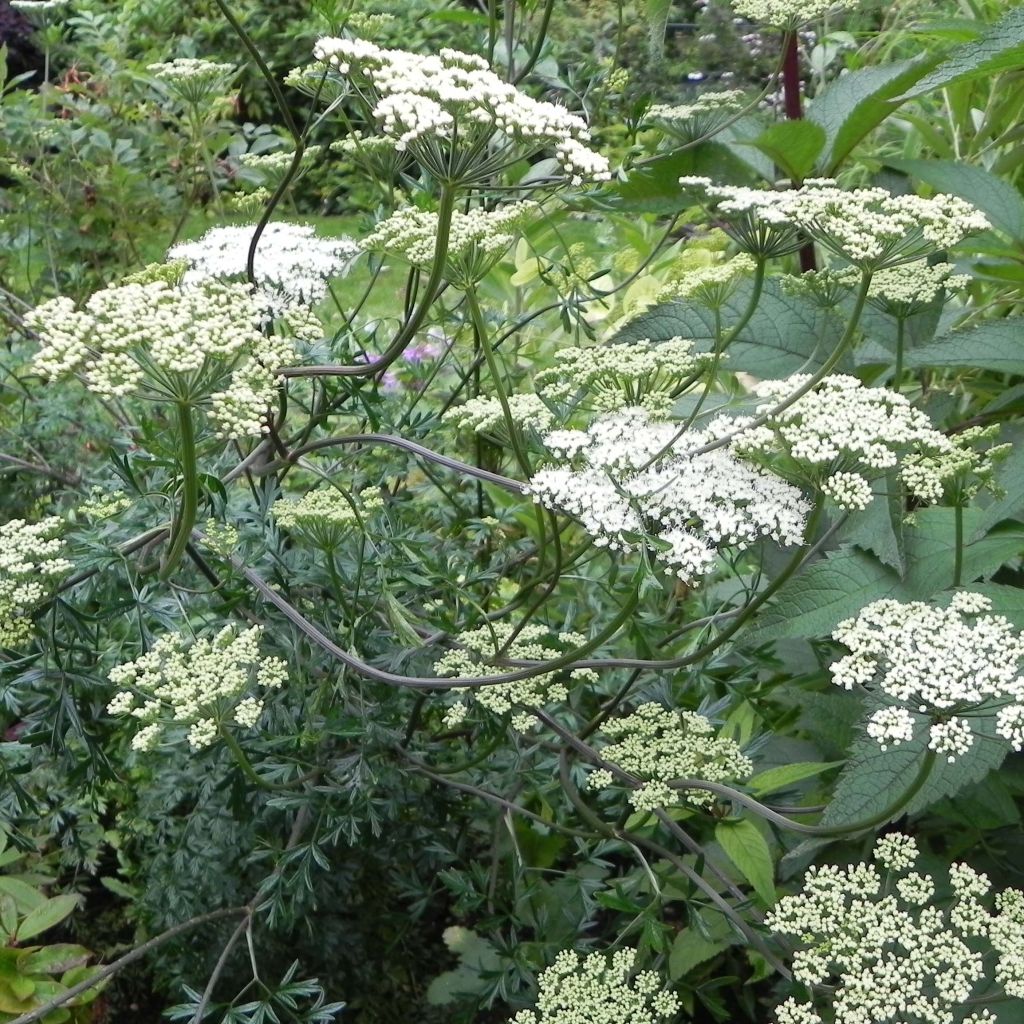

Cenolophium denudatum
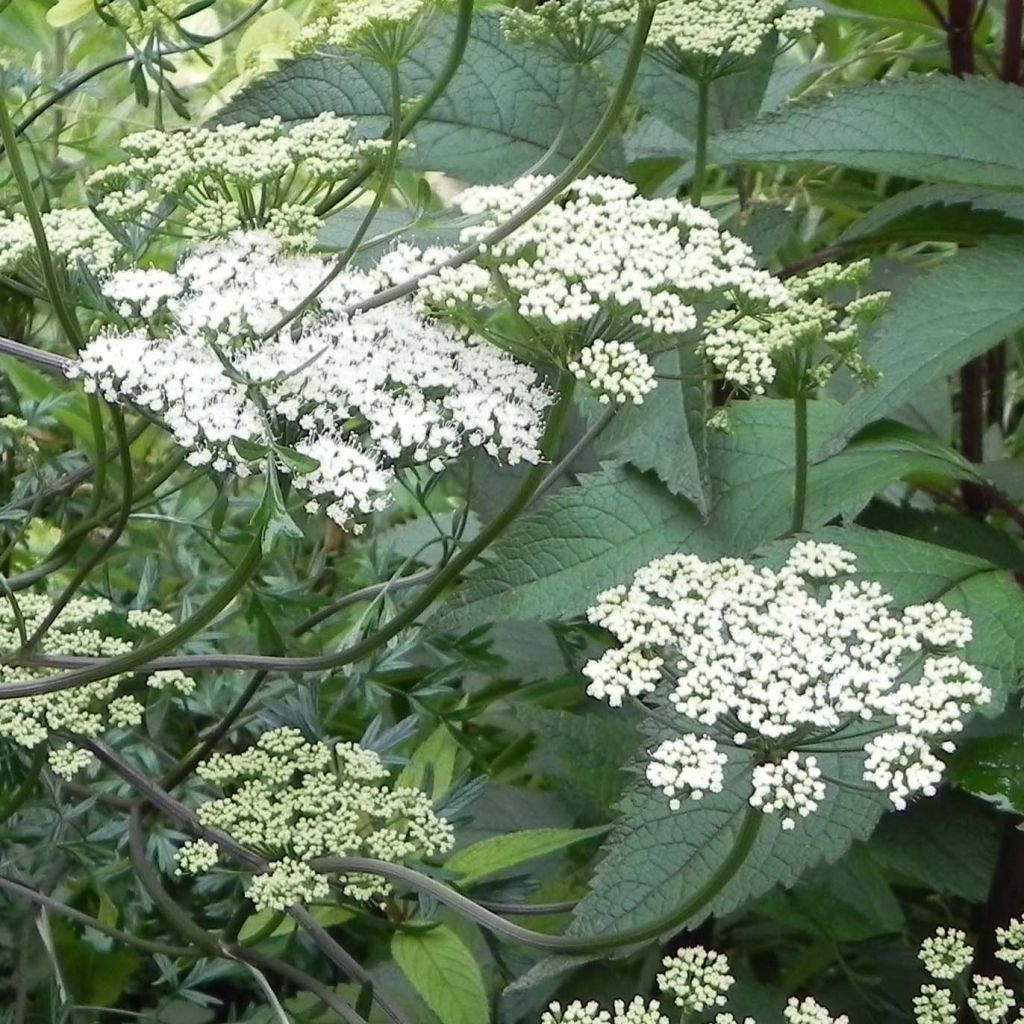

Cenolophium denudatum
Cenolophium denudatum
Cenolophium denudatum
Baltic parsley
Arrived in perfect conditions. Already growing new leaves!
Carla, 27/02/2025
Special offer!
Receive a €20 voucher for any order over €90 (excluding delivery costs, credit notes, and plastic-free options)!
1- Add your favorite plants to your cart.
2- Once you have reached €90, confirm your order (you can even choose the delivery date!).
3- As soon as your order is shipped, you will receive an email containing your voucher code, valid for 3 months (90 days).
Your voucher is unique and can only be used once, for any order with a minimum value of €20, excluding delivery costs.
Can be combined with other current offers, non-divisible and non-refundable.
Home or relay delivery (depending on size and destination)
Schedule delivery date,
and select date in basket
This plant carries a 12 months recovery warranty
More information
We guarantee the quality of our plants for a full growing cycle, and will replace at our expense any plant that fails to recover under normal climatic and planting conditions.

Would this plant suit my garden?
Set up your Plantfit profile →
Description
Cenolophium denudatum is an astonishing perennial belonging to the Apiaceae family. It is commonly known as Baltic parsley. This plant forms a large bushy clump, and is adorned with elegant, finely cut foliage. It blooms freely for several months, under the constant flight of butterflies and bees. Crowned with large white umbels, this wild plant brings a touch of natural beauty that enhances any decor. Vigorous and remarkably adaptable, Cenolophium denudatum survives almost anywhere and self-seeds easily wherever it pleases. Superb in a meadow, with small touches in flower beds, or alongside low-growing bushes. It adapts to any desire and style.
Cenolophium denudatum is the only species representing this genus belonging to the Apiaceae family, where you can find, for example, carrots, chervil, and celery. It is native to Europe and Asia, particularly the regions bordering the Baltic Sea, Siberia, and China. It is a robust pioneer plant that easily colonises open spaces and is very hardy, undemanding in terms of soil, and tolerant of drought. The Royal Horticultural Society (RHS) gave an award to this wild perennial plant for its ornamental qualities and performance in the garden.
The plant grows from a stump thickened by fibrous remains from previous year's stems. It quickly forms a bushy clump, reaching a height of 80cm (32in) to 1.2m (4ft), depending on the soil richness, with a spread of 60 to 70 cm (24 to 28in). The ramified stems are sometimes tinged with purple. The dark green stems bear finely divided leaves in their lower part. This aerial vegetation is evergreen depending on the severity of the winter. The remarkably long flowering period begins in June-July and continues until the arrival of cold weather in autumn. At the tips of the stems, light inflorescences organised in umbels, 10 to 12cm (4 to 5in) wide, appear. They are barely rounded, and composed of numerous small flowers with protruding stamens ranging from pale-green to white. This flowering is intensely nectar-rich and attractive to pollinators. After pollination by insects, fruits containing numerous fine seeds form and easily germinate in the garden.
Cenolophium denudatum should make a remarkable addition to gardens of all styles: countryside, meadow, cottage garden, large rockery, dry garden, romantic or contemporary flower beds. It is an extremely robust, undemanding, and charming plant that harmonises with all its annual, perennial, or shrubby neighbours. Its endless flowering animates the garden for several months, accompanying both peonies and late autumn asters and chrysanthemums. Plant it with centaureas and thistles, annual poppies and cornflowers, nigellas, cosmos, Ammi visnaga, and annual grasses (Lagurus ovatus). It can also be happily combined with roses, shrubby artemisias, dwarf abelias, small buddleias ('Wisteria Lane'), foxgloves and delphiniums, mallows and lavateras, and Achillea 'Terracotta'. Its flower umbels are also perfect in bouquets.
Report an error about the product description
Cenolophium denudatum in pictures
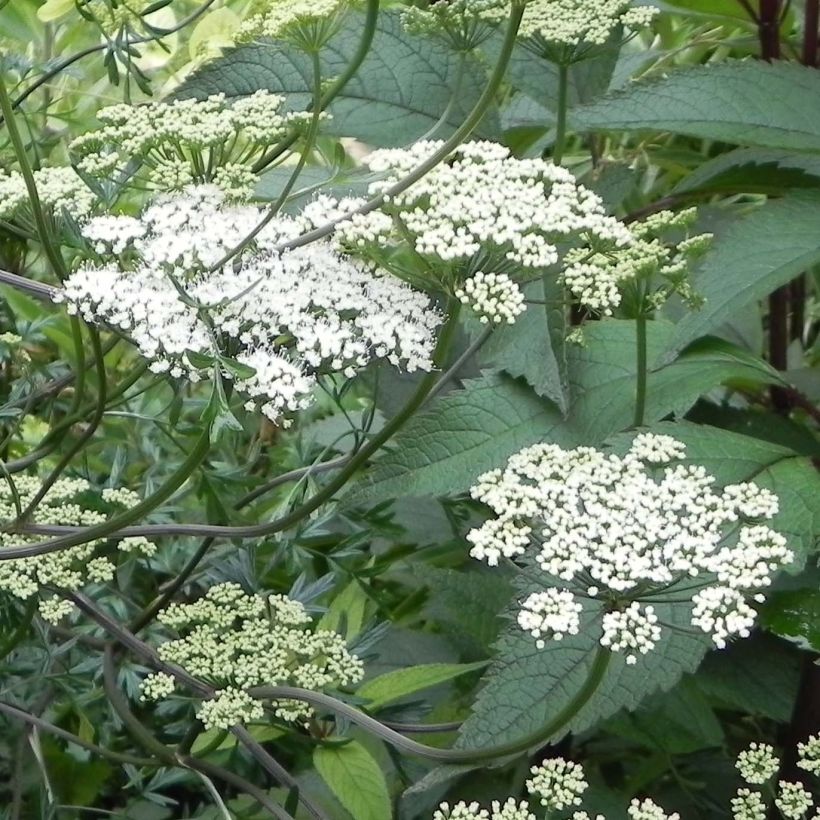

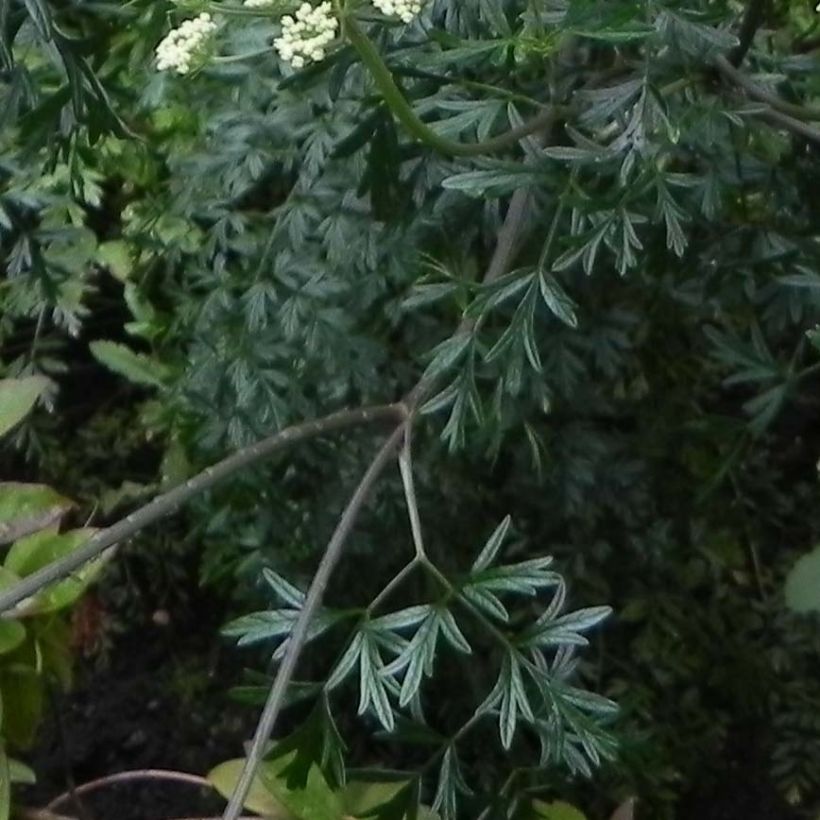

Flowering
Foliage
Plant habit
Botanical data
Cenolophium
denudatum
Apiaceae
Baltic parsley
Cultivar or hybrid
Other Perennials A to Z
View all →Planting and care
Plant in autumn or spring in any well-prepared and loosened garden soil. It is a very hardy and undemanding plant with regards to soil: it adapts to clay, sandy, humus-rich or limestone soils. Plant it in full sun or partial shade in the afternoon, spaced 50cm (20in) apart in all directions. Regularly water in sunny exposures during dry weather to help the plant establish. Mulch the soil to retain moisture if necessary. Once well-established, it does not require any watering in summer. Remove any misplaced or excessive seedlings. You can easily transplant the young seedlings as soon as they are manageable to replant them in suitable locations. This perennial is rarely diseased and rarely attacked by parasites.
Planting period
Intended location
Care
-
, onOrder confirmed
Reply from on Promesse de fleurs
Similar products
Haven't found what you were looking for?
Hardiness is the lowest winter temperature a plant can endure without suffering serious damage or even dying. However, hardiness is affected by location (a sheltered area, such as a patio), protection (winter cover) and soil type (hardiness is improved by well-drained soil).

Photo Sharing Terms & Conditions
In order to encourage gardeners to interact and share their experiences, Promesse de fleurs offers various media enabling content to be uploaded onto its Site - in particular via the ‘Photo sharing’ module.
The User agrees to refrain from:
- Posting any content that is illegal, prejudicial, insulting, racist, inciteful to hatred, revisionist, contrary to public decency, that infringes on privacy or on the privacy rights of third parties, in particular the publicity rights of persons and goods, intellectual property rights, or the right to privacy.
- Submitting content on behalf of a third party;
- Impersonate the identity of a third party and/or publish any personal information about a third party;
In general, the User undertakes to refrain from any unethical behaviour.
All Content (in particular text, comments, files, images, photos, videos, creative works, etc.), which may be subject to property or intellectual property rights, image or other private rights, shall remain the property of the User, subject to the limited rights granted by the terms of the licence granted by Promesse de fleurs as stated below. Users are at liberty to publish or not to publish such Content on the Site, notably via the ‘Photo Sharing’ facility, and accept that this Content shall be made public and freely accessible, notably on the Internet.
Users further acknowledge, undertake to have ,and guarantee that they hold all necessary rights and permissions to publish such material on the Site, in particular with regard to the legislation in force pertaining to any privacy, property, intellectual property, image, or contractual rights, or rights of any other nature. By publishing such Content on the Site, Users acknowledge accepting full liability as publishers of the Content within the meaning of the law, and grant Promesse de fleurs, free of charge, an inclusive, worldwide licence for the said Content for the entire duration of its publication, including all reproduction, representation, up/downloading, displaying, performing, transmission, and storage rights.
Users also grant permission for their name to be linked to the Content and accept that this link may not always be made available.
By engaging in posting material, Users consent to their Content becoming automatically accessible on the Internet, in particular on other sites and/or blogs and/or web pages of the Promesse de fleurs site, including in particular social pages and the Promesse de fleurs catalogue.
Users may secure the removal of entrusted content free of charge by issuing a simple request via our contact form.
The flowering period indicated on our website applies to countries and regions located in USDA zone 8 (France, the United Kingdom, Ireland, the Netherlands, etc.)
It will vary according to where you live:
- In zones 9 to 10 (Italy, Spain, Greece, etc.), flowering will occur about 2 to 4 weeks earlier.
- In zones 6 to 7 (Germany, Poland, Slovenia, and lower mountainous regions), flowering will be delayed by 2 to 3 weeks.
- In zone 5 (Central Europe, Scandinavia), blooming will be delayed by 3 to 5 weeks.
In temperate climates, pruning of spring-flowering shrubs (forsythia, spireas, etc.) should be done just after flowering.
Pruning of summer-flowering shrubs (Indian Lilac, Perovskia, etc.) can be done in winter or spring.
In cold regions as well as with frost-sensitive plants, avoid pruning too early when severe frosts may still occur.
The planting period indicated on our website applies to countries and regions located in USDA zone 8 (France, United Kingdom, Ireland, Netherlands).
It will vary according to where you live:
- In Mediterranean zones (Marseille, Madrid, Milan, etc.), autumn and winter are the best planting periods.
- In continental zones (Strasbourg, Munich, Vienna, etc.), delay planting by 2 to 3 weeks in spring and bring it forward by 2 to 4 weeks in autumn.
- In mountainous regions (the Alps, Pyrenees, Carpathians, etc.), it is best to plant in late spring (May-June) or late summer (August-September).
The harvesting period indicated on our website applies to countries and regions in USDA zone 8 (France, England, Ireland, the Netherlands).
In colder areas (Scandinavia, Poland, Austria...) fruit and vegetable harvests are likely to be delayed by 3-4 weeks.
In warmer areas (Italy, Spain, Greece, etc.), harvesting will probably take place earlier, depending on weather conditions.
The sowing periods indicated on our website apply to countries and regions within USDA Zone 8 (France, UK, Ireland, Netherlands).
In colder areas (Scandinavia, Poland, Austria...), delay any outdoor sowing by 3-4 weeks, or sow under glass.
In warmer climes (Italy, Spain, Greece, etc.), bring outdoor sowing forward by a few weeks.
































